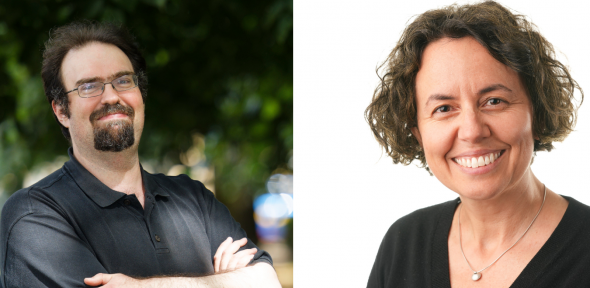
Luke Abraham taken by Michael Webb and Maria Russo, both ©University of Cambridge
A climate science project, led by Dr Luke Abraham, has been awarded a Natural Environment Research Council (NERC) grant.
The Virtual Integration of Satellite and In-Situ Observation Networks (VISION) project has been funded for 15 months. The team will combine atmospheric observations and models to optimise flight paths for research aircraft so that future research missions are more efficient with lower CO2 emissions.
Dr Maria Russo, part of the National Centre for Atmospheric Science (NCAS), and Researcher co-Lead on the VISION project, comments:
“This project is a great opportunity to work with an amazing team of people using a multi-disciplinary approach and I’m thoroughly looking forward to it. This work will enable better comparison of atmospheric observations with models, ultimately leading to a better understanding of atmospheric processes and an improvement in Climate and Earth System Models.”
Dr Luke Abraham, a Director of Research in the Department and member of NCAS comments:
“As well as developing important new tools and visualisation methods to improve our ability to compare atmospheric models and observations, the VISION project aims to produce real-world benefits by developing a digital twin of the NERC research aircraft, the FAAM airborne laboratory to improve mission outcomes and reduce its carbon footprint.”
NERC
The NERC fund supports projects that combine Earth Observation data with emerging digital technology to advance environmental science. The programme called TWINE (TWINning capability for the natural Environment) supports research that uses digital twins of natural environments to address challenges such as climate change.
Luke wrote for the NERC:
“This project will deliver a toolkit and novel visualisations that will allow for better integration of models and observations to enhance our confidence in future climate projections and will develop a digital twin to improve the operational flights of the FAAM Airborne Laboratory atmospheric research aircraft. The aim is to improve the flight plans to better match the scientific aims, and also to reduce the number of flights necessary to achieve those aims.
“It will bring together a team of atmospheric modellers, software engineers, and satellite experts to deliver a novel framework to reduce the carbon footprint of the UK research aircraft.”
